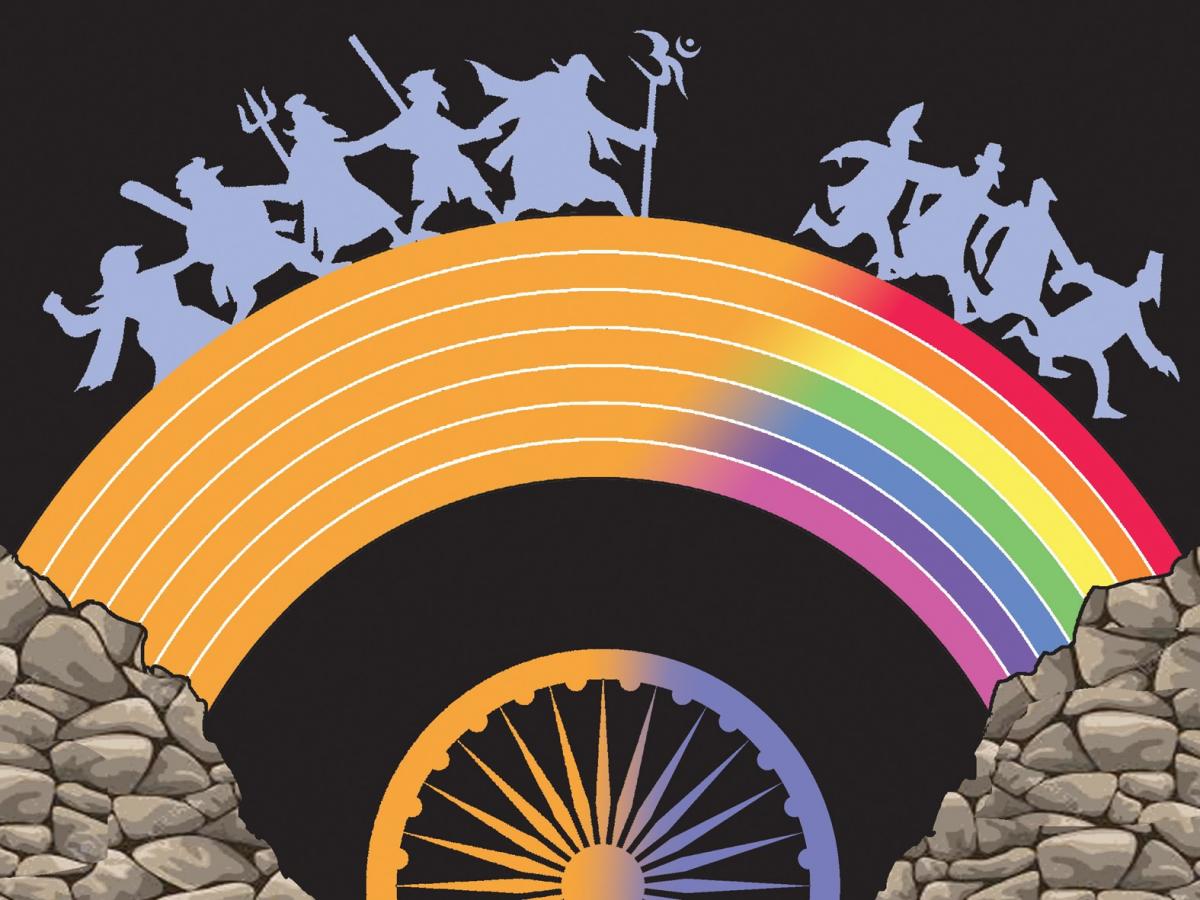With freedom of the country and later coming in to being of Indian Constitution, India became a secular democratic republic. At the same time the breakaway Pakistan’s founder Mohammad Ali Jinnah, in a speech in Pakistan Constituent Assembly also declared that Pakistan would be a secular state. Soon enough after the death of Jinnah the logic of partition took over and Pakistan in due course was declared the Islamic Republic of Pakistan. Same Pakistan, which came to be formed in the name of Islam, broke into Bangla Desh and Pakistan on the ground of language and geography among other reasons. India progressed to be a secular state; has been trying to uphold the values of secularism. Despite many hiccups, its attempt to keep alignment with secular values has been there until couple of decades ago, when the issue of Ram Temple raked up along with an assertion that India is a Hindu Rashtra. Sectarian nationalists have been asserting that, the secular values and Indian Constitution are not as per the ethos of this country and so the Constitution be changed to pave the path for Hindu Rashtra (Nation).

Illustration: Ajit Ninan
The lopsided partition of India, formation of Pakistan in the name of Islam on one side and secular India on the other was the accepted historical fact at that time. With the assertion of Hindu nationalism, many of those who should know better are also not able to fathom the historical events in the correct light and its complexity. This came to surface yet again, when the judge of Meghalaya, Justice Sen, in a judgement related to a petition related to domicile certificate made comments that, as India was partitioned on the ground of religion and Pakistan was formed for Muslims, India should have been declared as a Hindu Rashtra. When faced with criticism he did say that he does believe in secularism and that India should not be further divided based on religion or caste.
How do we see such utterances from such learned judges and their likes? The history of India’s freedom movement and partition has been misrepresented times and over again. It shows that popular perceptions of the causes of partition tragedy do not present the real dynamics of the phenomenon and the massive tragedy of mass migration, which followed that partition process. The subcontinent continues to suffer from the after effects of partition in various forms. While in India, it is presumed that it was the separatism of Muslims, which led to partition, In Pakistan it is presumed that Muslims have been a nation since the time Mohammad bin Kasim ruled in Sind in eighth century, and that formation of Pakistan was needed to overcome the domination of Hindus.
Both these are mirror image views, which are very superficial and present the viewpoints of communal sections of society. Majority of Muslims and Hindus did stand for composite Indian nationalism, as represented by Indian National Congress (INC) led by Gandhi. These were the views of those who, which led the, anti-colonial movement, the movement for India’s independence. With the rise of freedom movement which represented the longings of the newly emerging social classes of industrialists, businesspersons, workers, and educated classes who aspired for a democratic society. They veered around, INC, Gandhi. The freedom movement had two aspects. One was to oppose the British rule and the other was to build modern India founded on the values of Liberty, Equality and Fraternity.
At the same time, the feudal elements, declining classes, started opposing the process of making of modern India and opposing the anti-colonial movement. These declining classes were steeped in the values of birth-based inequality, hierarchy of caste and gender. They in due course; separated in the name of religion. British policy of ‘Divide and rule’ played major role in separation of elements of feudal origin in the name of religion. First, Muslims elite was encouraged and they formed Muslim League and the remaining Hindu elite grouped themselves into Punjab Hindu Sabha and later Hindu Mahasabha. Interestingly only kings and land-lords were part of these organizations in the beginning. It is later that some upper caste, educated elite also joined these organizations. Muslim League in due course talked of Muslim Nation. Hindu Mahsabha asserted that we have Hindu and Muslim nation in this country and that Hindu nation is primary. Around this ideology, RSS came up with the goal of Hindu nation. These organizations resorted to identity politics and spread hatred against the ‘other’ religious community. This laid the foundation of violence.
It was British who aimed at having a client state in South Asia, and hastened the formation of Pakistan for Muslims and remaining India for both the communities. It is ironical that despite Muslim majority, area demarcated as Pakistan; a larger number of Muslims were part of India. At one level the confusion of likes of Justice Sen, has grounding in the very lopsided policy, which led to creation of Pakistan, in the Muslim majority areas.
That India should be a secular democracy was not just the part of fanciful dream of leaders of freedom movement; it was the echo of the aspirations of the vast sections of Indian society. It was this vision of average Indians, which our leaders, founding fathers articulated, and this is what was enshrined in Indian Constitution.
Last three decades have seen the trampling of these values, which vast masses of Indian society dreamt and dream. As Muslim League in later parts of pre- Independence India could mobilise more Muslims due to its games of identity politics, in India today due to rise of identity politics some sections of society have been deluded into believing that this is a Hindu nation. These illusions built around identity issues should be made to melt fast to remind us of our tasks of building a nation of equals, irrespective of our religion, caste and gender.